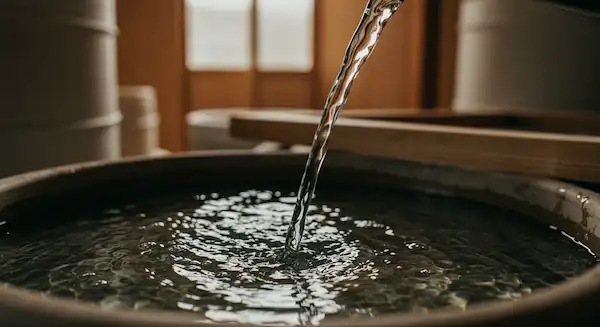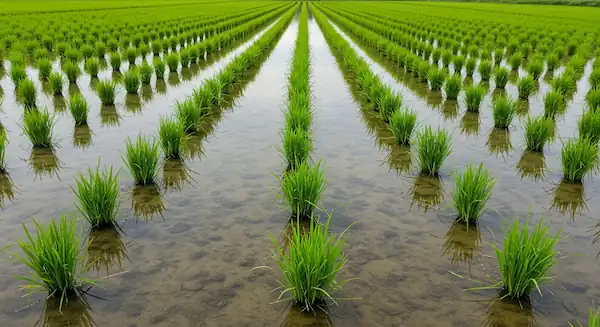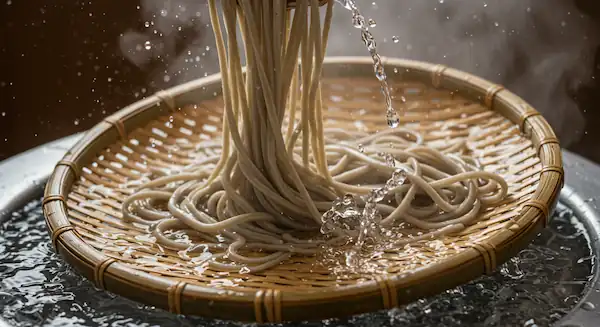A Story Woven by Japan’s Water Culture
Many visitors to Japan are surprised and deeply impressed by the high quality of its water.
From clean tap water that’s safe to drink straight from the faucet, to the rich flavors nurtured by local climates, and the deep-rooted presence of water in people’s spirituality and culture, water in Japan transcends being merely a basic necessity.
t holds multifaceted value.
Table of Contents
The Cleanliness and Safety of Japanese Water
Japan’s tap water boasts an exceptionally high level of safety by global standards.
While purchasing bottled mineral water is commonplace in many countries, in Japan, you can safely drink tap water directly without needing to buy bottled water.
This is underpinned by strict water quality management and continuous efforts to maintain it.
The Ministry of Health, Labour and Welfare sets detailed water quality standards that tap water must meet.
For instance, the number of general bacteria must be 100 or less per 1 ml of water, E. coli must not be detected, and strict limits are set for harmful substances like cadmium, mercury, and arsenic.
Furthermore, for PFAS (per- and polyfluoroalkyl substances), which have garnered recent attention, a provisional target value of 50 ng/L or less for the combined total of PFOS and PFOA has been set and is strictly managed.
In cases where this provisional target value was exceeded, water intake from the source was stopped, or water sources were switched to reduce concentrations.
It’s confirmed that 98.2% of Japan’s water supply population uses tap water with quality below the provisional target value.
This thorough management system demonstrates a strong commitment to ensuring citizens enjoy safe water while reliably maintaining the effectiveness of chlorine disinfection, which is essential for preventing infectious diseases.
As a result, the incidence of waterborne infectious diseases is extremely low in Japan.
This high level of safety and cleanliness reduces the need to purchase bottled water in Japan, also contributing to environmental burden reduction.
The Japanese Palate’s Sensitivity and Preference for Water
Japanese people tend to be very sensitive to the taste of water.
Many Japanese prefer soft water, valuing its mellow and easy-to-drink mouthfeel.
This preference is evident in the fact that many commercially available mineral waters and water server brands also offer soft water.
The taste of water is significantly influenced by its magnesium and potassium content; water with less magnesium and more potassium is said to taste sweeter.
It’s not uncommon to perceive differences in water taste depending on the region.
People who move from rural areas to cities, or those with sensitive palates, sometimes notice a slight saltiness in urban tap water.
This is due to minute amounts of salt in urban water, which also makes rural water taste sweeter by comparison.
This dedication to water taste extends beyond just drinking water, deeply permeating Japanese food culture.
A survey by a food manufacturer revealed that 25% of respondents are particular about the water they use for cooking, and 32% are particular about the water for making tea.
Specific reasons cited include “wanting to extract delicious dashi (broth),” “being concerned about chlorine odor,” and “rice cooks more deliciously.”
While the majority of Japanese people recognize that public tap water is clean, the fact that a significant number are concerned about its taste clearly demonstrates the Japanese delicate palate for water.
Water Nurtures Japanese Food Culture
Water is an indispensable element when discussing Japanese food culture. Especially in sake, rice, and all aspects of Washoku (traditional Japanese cuisine), water quality plays a crucial role in determining the taste and quality of the food.
Sake and Water Quality
Approximately 80% of sake is composed of water, and its quality profoundly impacts the sake’s characteristics.
The “shikomi-mizu” (preparation water) used in sake brewing is subject to even stricter water quality standards than tap water; specifically, the limit for iron, which causes discoloration in sake, is 15 times stricter than that for tap water.
Water hardness significantly affects sake’s flavor.
Sake brewed with soft water, which has low mineral content, tends to have a mellow, light, delicate, and “tanrei” (dry and crisp) quality.
In contrast, sake brewed with hard water, rich in minerals, promotes active yeast fermentation, resulting in a robust, sharp, full-bodied, and dry sake.
The water quality in Japan’s three major sake brewing regions shapes the unique characteristics of their local sake:
- Nada (Hyogo)
Uses “Miyamizu,” a medium-hard water with a hardness of around 100.
Rich in phosphorus, potassium, and calcium, and low in iron, it encourages active yeast activity, producing crisp, sharp, “otoko-zake” (masculine sake). - Fushimi (Kyoto)
Uses “Gokosui,” a medium-hard water closer to soft water with a hardness around 80, lower than Nada. Its relatively low mineral content allows for slower fermentation, resulting in a refined, soft-tasting “onna-zake” (feminine sake). - Hiroshima Saijo
Uses very soft water with a hardness around 30.
Once considered difficult for brewing, the “soft water brewing method” was established by Senzaburo Miura in the Meiji era, laying the foundation for today’s light and fragrant ginjo-shu.
Thus, the characteristics of spring water, determined by regional geological conditions, directly influence the taste of local sake.

Rice and Water Quality
Rice, the staple food of Japanese people, also undergoes significant taste changes depending on water quality.
Rice tends to absorb odors when it absorbs water, so the chlorine in tap water can affect the rice’s aroma and flavor.
While legally mandated chlorine levels are necessary for infection prevention, the chlorine odor can be noticeable when cooking rice.
Therefore, allowing water to stand or boiling it to remove chlorine can improve the taste of cooked rice.
The water used for the initial rinsing and soaking of rice is especially critical as it influences the final taste.
Water is also extremely important in rice cultivation.
Water management in paddy fields serves multiple purposes, including promoting seedling establishment, tillering, maintaining root respiration, and suppressing weeds and pests.
Proper water management fosters strong rice plants, leading to improved yield and taste.
For instance, research shows that slightly alkaline soil with a balanced mineral content increases blue-green algae, which produces substances that enhance crop absorption, thus growing nutritious and tasty rice.
Some rice varieties are even rich in calcium, zinc, folic acid, and even vitamin B12, which is usually not detected.
Furthermore, the application of silicic acid is known to improve grain uniformity, enhancing the appearance and stability of cooked rice.

Washoku and Water Quality
Washoku is often described as “water cuisine” because its delicate flavors are deeply intertwined with water.
Dashi (broth), the foundation of Washoku, changes in taste with different water.
Since much of Japan’s water is soft water with lower hardness compared to places like Europe, it excels at extracting umami from dashi ingredients.
Japanese chefs cooking overseas sometimes transport soft water from Japan, illustrating water quality’s decisive impact on dashi flavor.
Even within Japan, water hardness varies by region, leading to differences in food culture.
For example, Kanto water is harder, making it more difficult to extract umami from dashi, while Kansai water is softer and facilitates umami extraction.
The anecdote of Kyoto chefs struggling to make dashi taste the same in Tokyo, even with the same kombu, highlights the influence of water quality.
Beyond dashi, water acts as “one of the seasonings” in all Washoku cooking processes, including cooking rice, brewing tea, making miso soup, and boiling, steaming, or simmering ingredients.
For simmered dishes, soft water is suitable for achieving tenderness and absorbing flavors, while hard water tends to produce more scum.
However, for specific purposes like de-skimming meat dishes, the calcium and magnesium in hard water can combine with undesirable components, generating more scum and resulting in a clearer-tasting dish.
contributes to the quality of local specialty products:
- Tofu
Kyoto has abundant high-quality soft groundwater.
This mineral-poor soft water inhibits protein coagulation in soybeans, producing soft and smooth tofu. - Soba
In Matsumoto City, Nagano Prefecture, the pure waters of the Matsumoto Castle Town Spring Group contribute to the production of smooth, handmade soba that brings out the flavor of the buckwheat flour.
Soba uses roughly half its weight in water when kneaded, and dashi is also made from water, leading some to say that eating soba is “eating water.” - Tea
Soft water with a hardness of 30-100 and pH of 7-8, such as spring water from the Abe River system in Shizuoka or Hadano water, is ideal for sencha (green tea).
It effectively extracts tea leaf components, brewing a well-balanced tea with umami, astringency, and bitterness.

The Spiritual and Cultural Relationship of Japanese People with Water
Water not only supports life and food but is also deeply rooted in Japanese spirituality and culture.
From Shinto beliefs to literature, art, and festivals, water breathes in various forms within Japanese culture.
Water Beliefs in Shinto
In Shinto, water holds profound significance as a symbol of “purification.”
The ritual of “temizu” (purifying hands and mouth) when visiting a shrine is said to originate from the “misogi-harai” (purification ritual) of Izanagi-no-mikoto in Japanese mythology.
This is a simplified form of an ancient belief: immersing oneself in water to wash away impurities and approach gods and buddhas with a pure mind and body.
Through temizu, calming one’s heart and showing sincerity towards the deities is not just a matter of manners, but a way to deepen the connection with the divine.
Water has also been regarded as the source of life, essential for fertility and creativity.
The example of the Jinguuji River nourishing the rice paddies of the Iinoya Basin and sustaining people’s lives illustrates how water is linked to the “ubusuna” (birthplace) – the origin of life.
Water Expression in Literature and Art
In Japanese literature and art, water has been depicted as a diverse symbol.
Water can be reduced to three main themes: “source of life,” “means of purification,” and “center of regeneration.”
From ancient traditions to the present day, it has shaped various combinations of imagery.
In literature, water is often used as a metaphor for love or symbolizes fertility and creativity.
Also, calm water signifies peace and order, while turbulent water represents disaster and chaos, carrying different meanings depending on its state.
Especially, the concepts of “mujokan” (impermanence) and “mono no aware” (a pathos or empathy towards things), which underlie Japanese aesthetics, are deeply connected to the sensibility of finding beauty in the fleeting and transient nature of things, such as flowing water and scattering cherry blossoms.
In Japanese painting, water is not merely a part of the landscape; its purity, movement, stillness, and even mist are delicately expressed.
Katsushika Hokusai’s “Tour of Waterfalls in Various Provinces” masterfully depicts falling waterfall spray, rippling water surfaces, and even still water, revealing Hokusai’s keen observation and exploration of water representation.
In Japanese gardens, water is a crucial element for condensing natural beauty and achieving tranquility.
In pond gardens, actual water is used, and the sounds of waterfalls or suikinkutsu (water koto caves) are said to bring mental restoration.
On the other hand, “karesansui” (dry landscape gardens) are a style that represents water flow or the sea using white sand and stones without actual water, linking to the Zen spirit of perceiving water even in non-water elements through meditation.
This was also an economical wisdom that sought to reproduce nature with limited resources, and the tradition of cherishing Japan’s abundant water resources and drawing out their goodness has been continuously passed down.
Water Rituals in Festivals
Various water-related festivals are preserved across Japan.
These festivals leverage water’s power of “purification” and “regeneration” to pray for regional safety, good harvests, and good health.
For example, water-splashing festivals involve splashing water on each other to ward off evil, pray for good health, bountiful harvests, and celebrate the New Year.
Like the Thingyan (Water Festival) in Myanmar, these festivals are deeply connected to Buddhist traditions and also serve as sacred rituals to wash away past sins and impurities, purifying the mind and body.
Many festivals are also deeply intertwined with rice cultivation culture.
At the “Minakuchi-sai” (Water Inlet Festival), prayers for a good harvest are offered to the water deity when sowing rice seeds in seedling beds.
The “Otaue-sai” (Rice Planting Festival) prays for safe rice planting and a bountiful harvest. When droughts persist, “Amagoi” (rainmaking) rituals are performed, with dances and bonfires to pray for rain.
Additionally, in “Mushiokuri” (insect warding) festivals, torches are lit and straw effigies are floated down rivers to drive away pests.
“Uchimizu” (sprinkling water) is also an ancient Japanese custom, originally meant to purify gates and entrances with water.
It is presumed that this was done to foster pleasant relationships with visitors and welcome them with a comfortable feeling.
During the Edo period, the shogunate focused on maintaining clean living environments, with regulations even requiring public roads to be sprinkled with water, emphasizing water’s cleansing effect.
Conclusion
Japan’s water, with its astonishing cleanliness and safety, supports the foundation of its national life.
However, its value extends beyond mere potability.
The Japanese delicate palate perceives even subtle differences in water, which has profoundly contributed to the development.
References
- Ministry of Health, Labour and Welfare: Water quality standards based on Article 4 of the Water Supply Act
- Ministry of the Environment: Tap water quality standards
- Consumer Affairs Agency: Q&A regarding “Standards and Criteria for PFOS and PFOA in Mineral Water”
- Aichi Industrial Science and Technology Center Food Industry Technology Center: The effect of water quality on sake quality
- Shrine headquarters: About the Chozuya









